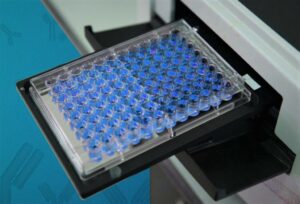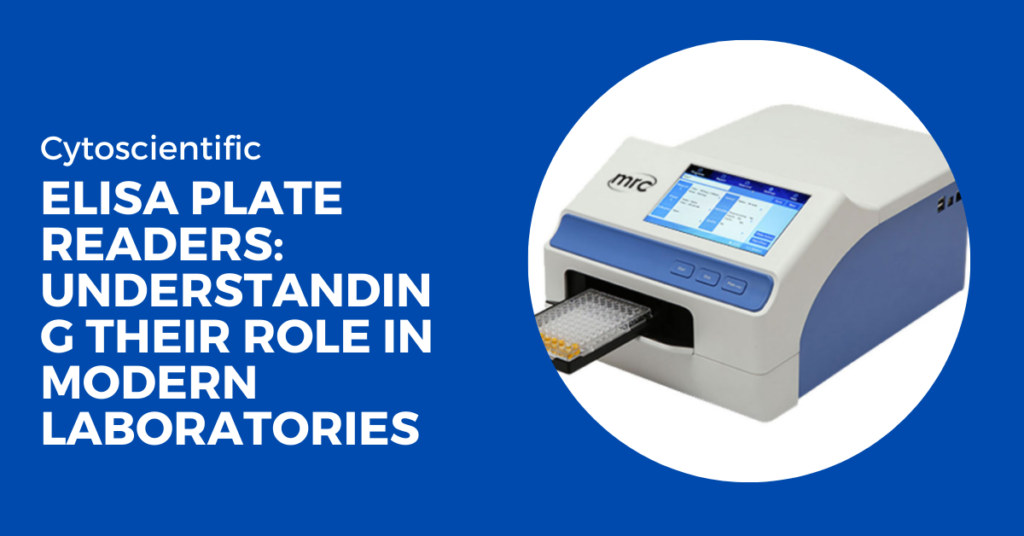ELISA (Enzyme-Linked Immunosorbent Assay) plate readers have become indispensable in modern laboratories. These instruments allow researchers to conduct accurate and efficient analyses across a wide range of biological and chemical applications. By understanding their role and functionality, you can better appreciate why ELISA plate readers are vital to scientific research today.
What is an ELISA Plate Reader?
How Does an ELISA Plate Reader Work?
ELISA plate readers operate based on the principle of detecting signals generated by enzyme reactions in an ELISA assay. In an absorbance-based ELISA, the reader passes light through each well of the microplate and measures how much light is absorbed by the sample. The amount of light absorbed is directly related to the concentration of the analyte in that well.
In fluorescence and luminescence-based ELISAs, the plate reader detects light emitted by the sample as a result of the enzyme-substrate reaction. These methods often provide greater sensitivity than absorbance readings, making them suitable for detecting low concentrations of substances.

Elisa plate readers play a vital role in today's laboratories.
ELISA plate readers serve as crucial tools in modern laboratories. They allow scientists to measure and analyze important substances, like proteins, antibodies, and hormones, with great accuracy. These readers detect signals from small samples placed in plates with many tiny wells, such as a 96-well plate. Each well holds a different sample, and the ELISA plate reader measures how much light, fluorescence, or luminescence each sample emits.
This information helps scientists determine the amount of a particular substance present in the sample. By automating the process, ELISA plate readers quickly and reliably handle many samples at once, saving time and reducing the chance of errors. Their speed and accuracy make them essential in research, medical testing, and drug development.
Choosing the Right ELISA Plate Reader for Your Lab
Choosing the right ELISA plate reader depends on the unique requirements of your laboratory. Consider the types of assays you plan to run, the sensitivity required for your applications, and your budget. Some readers offer advanced features such as multiple detection modes, integrated data analysis software, and compatibility with automated systems. Evaluating these factors will help you choose a plate reader that best suits your research objectives.
FAQ
An ELISA plate reader is an instrument that measures and quantifies substances in microplate formats, typically using absorbance, fluorescence, or luminescence to detect signals from samples in wells.
2. How does an ELISA plate reader work?
The plate reader shines light through each well of the microplate and measures how much light is absorbed or emitted by the sample.
3. What types of assays can I perform with an ELISA plate reader?
You can perform various assays, including absorbance-based, fluorescence-based, and luminescence-based ELISAs, as well as other applications like protein quantification and nucleic acid analysis.
4. Why is accuracy important in ELISA plate readers?
Accuracy is crucial because researchers rely on precise measurements to draw valid conclusions in their experiments.
5. What should I consider when choosing an ELISA plate reader?
Consider the types of assays you will conduct, the required sensitivity, throughput needs, user interface, software capabilities, and your budget.
6. Are ELISA plate readers user-friendly?
Many modern ELISA plate readers come with intuitive software interfaces that simplify the setup, data acquisition, and analysis processes, making them accessible even to users with limited experience.
7. Can ELISA plate readers be used for applications outside of ELISA assays?
Yes, ELISA plate readers can be used for various applications beyond traditional ELISA, including protein and nucleic acid quantification, cell viability assays, and more.
8. How can I ensure the reliability of my ELISA plate reader?
Regular calibration and maintenance, using high-quality reagents, and following standardized protocols can help ensure the reliability and accuracy of your ELISA plate reader.
In summary, ELISA plate readers play a pivotal role in the modern laboratory. They enable precise, efficient, and versatile analyses that are essential to advancing scientific research. Whether you’re conducting basic research or high-throughput screening, the accuracy and efficiency of ELISA plate readers ensure that you can trust your data and focus on making new discoveries. As technology continues to evolve, these instruments will remain a cornerstone of laboratory work, driving progress in fields ranging from medicine to environmental science.

